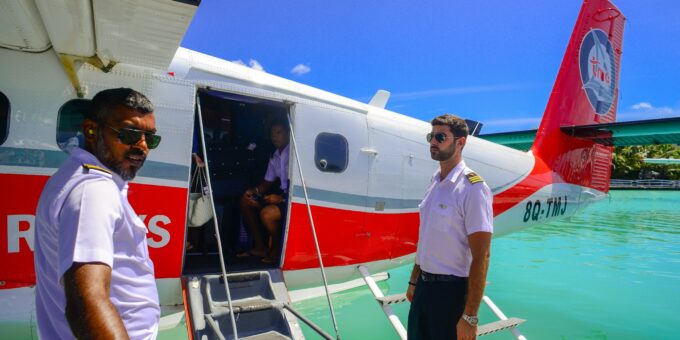
Flight simulators have long been a cornerstone of pilot training, but with AI pilots, their role becomes even more critical. For human pilots, simulators are primarily used to practice navigation, handle emergencies, and improve judgment under pressure. For AI, simulators provide something even more valuable—unlimited and repeatable training environments.
There are two main types of simulators: hardware-based and software-based. Hardware simulators replicate cockpits with physical controls, motion systems, and panoramic visuals. These provide tactile experiences that mimic real-world sensations such as turbulence, acceleration, and stall warnings. Software simulators, on the other hand, rely on advanced graphics engines and data models to simulate flights virtually, often using VR or AR.
Modern flight simulators now combine both. They are equipped with high-resolution displays, 360-degree motion platforms, and realistic sound environments. For AI pilots, these tools offer an endless variety of scenarios—landing in crosswinds, navigating storms, responding to system failures—all within a controlled digital space. Unlike human trainees, AI systems can train continuously without fatigue, logging thousands of simulated flight hours in just days.
Benefits of AI Pilot Training with Simulation
One of the biggest advantages of training AI pilots through simulation is cost-effectiveness. Traditional pilot training is expensive, requiring fuel, aircraft maintenance, and instructor time. In contrast, simulation-based training allows AI models to learn faster, cheaper, and without consuming physical resources.
Safety is another crucial benefit. Real-world training comes with inherent risks, especially when testing emergency procedures. Simulators remove this danger entirely. AI can be exposed to high-risk events—engine fires, sudden depressurization, bird strikes—without endangering lives.
Simulation also accelerates learning. While a human pilot may take years to build enough experience to face diverse flight scenarios, an AI pilot can process and analyze thousands of scenarios in days. This rapid exposure enables AI to learn from rare but critical events, making it potentially more resilient than human pilots in certain situations.
Furthermore, AI trained in simulators can contribute to hybrid cockpit models, where humans and AI co-pilot aircraft together. This collaboration could significantly reduce human error, which remains the leading cause of aviation accidents.
Core Technologies Behind Flight Simulation
Flight simulation today goes far beyond simple graphics and joystick controls. At the heart of AI pilot training lies a suite of advanced technologies that make simulations immersive and data-rich.
Virtual Reality (VR): VR headsets create 3D environments where AI systems can be trained alongside human pilots, providing shared simulations for collaboration.
Augmented Reality (AR): AR overlays digital elements on real-world scenarios, helping AI understand how to react to mixed environments.
Mixed Reality (MR): MR blends real and virtual worlds, useful for training AI to handle partial system failures where analog and digital systems interact.
Motion Platforms: These platforms replicate real flight sensations such as acceleration, turbulence, and landing impact, ensuring AI learns not just from visuals but from kinetic feedback.
AI-driven Scenarios: By using procedural generation, simulators can create unlimited unique training scenarios, keeping AI constantly challenged.
These technologies ensure that AI pilots are not simply memorizing scripted events but instead developing the adaptability needed for real-world aviation.
Machine Learning in Pilot Training
AI pilots rely heavily on machine learning (ML) techniques. Unlike traditional programming, where rules are hardcoded, ML allows AI to “learn” by analyzing data patterns. For aviation, this is critical because no two flights are exactly alike.
Reinforcement Learning (RL): AI learns by trial and error. For example, an AI pilot might attempt thousands of landings, receive feedback on performance, and gradually optimize its techniques.
Supervised Learning: Here, the AI is trained on labeled datasets of past flight data, learning what correct and incorrect responses look like.
Unsupervised Learning: This approach allows AI to discover patterns in unlabeled data, useful for identifying anomalies or unexpected risks.
When combined, these methods give AI the ability to react dynamically. For example, in case of engine failure, instead of following a rigid checklist, the AI can analyze conditions—altitude, weather, location—and determine the safest response.